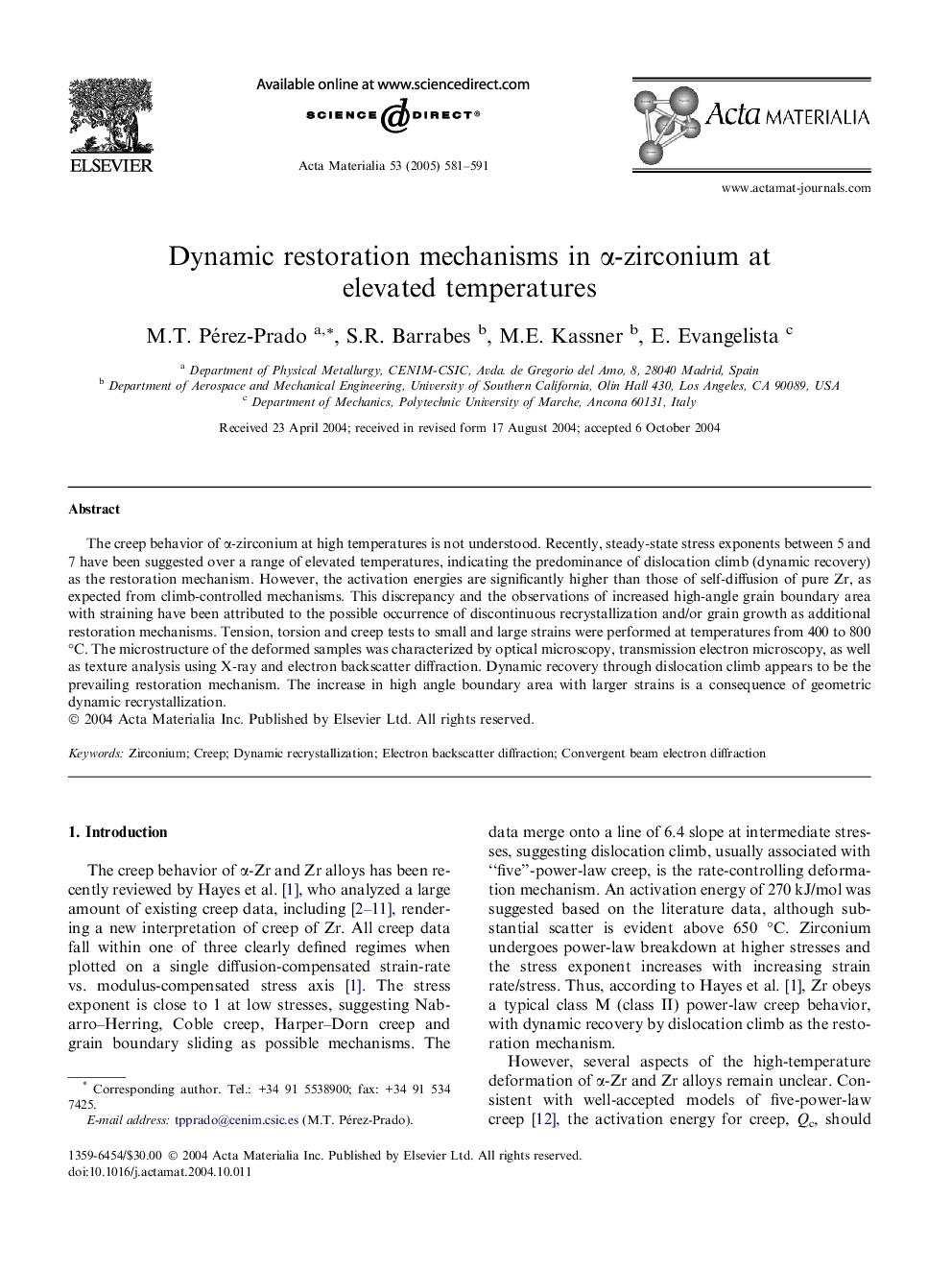| Article ID | Journal | Published Year | Pages | File Type |
|---|---|---|---|---|
| 10621196 | Acta Materialia | 2005 | 11 Pages |
Abstract
The creep behavior of α-zirconium at high temperatures is not understood. Recently, steady-state stress exponents between 5 and 7 have been suggested over a range of elevated temperatures, indicating the predominance of dislocation climb (dynamic recovery) as the restoration mechanism. However, the activation energies are significantly higher than those of self-diffusion of pure Zr, as expected from climb-controlled mechanisms. This discrepancy and the observations of increased high-angle grain boundary area with straining have been attributed to the possible occurrence of discontinuous recrystallization and/or grain growth as additional restoration mechanisms. Tension, torsion and creep tests to small and large strains were performed at temperatures from 400 to 800 °C. The microstructure of the deformed samples was characterized by optical microscopy, transmission electron microscopy, as well as texture analysis using X-ray and electron backscatter diffraction. Dynamic recovery through dislocation climb appears to be the prevailing restoration mechanism. The increase in high angle boundary area with larger strains is a consequence of geometric dynamic recrystallization.
Keywords
Related Topics
Physical Sciences and Engineering
Materials Science
Ceramics and Composites
Authors
M.T. Pérez-Prado, S.R. Barrabes, M.E. Kassner, E. Evangelista,
